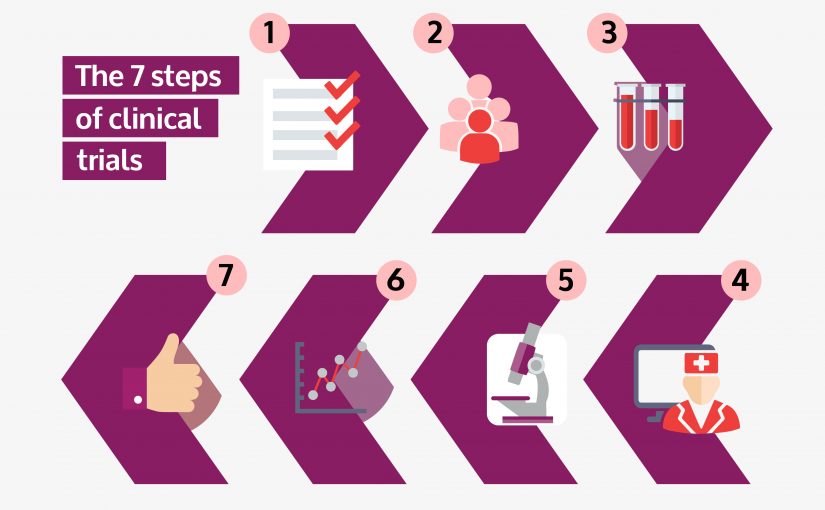The term ‘clinical trial’ is laden with the hope of wonder treatments and medical breakthroughs but beyond the medical community, few people know what is truly involved in clinical trials and how pathology is a key component.
The purpose of a clinical trial is to establish evidence to inform clinical practice. Much emphasis is placed on trials that bring new drugs or devices to the clinic, but a large body of research also assesses which existing practices work best; these are known as comparative effectiveness trials.
All trials can be broken down into a series of steps:
1. Hypothesis generation and design
A clinical question is identified based on addressing an identified problem. For instance, there may be a suspected greater risk of infection in people with an increased BMI (Body Mass Index) who are undergoing large abdominal surgery. Researchers would first check their theory by cross checking medical records and pathology notes. As a possible solution, investigators might suggest using an antibiotic pre-emptively to prevent infection. To test this intervention, researchers would measure the number and types of any infections after surgery, as well as the overall health of patients. Pathology would be used in analysis of infections and ensuring patient safety in the trial.
2. Recruitment
Pathology is used to make sure a person meets the inclusion criteria to take part in a trial, for example that they have a cancer with specific characteristics such as HER2 positive breast cancer. There are also exclusion criteria that may prevent someone from participating, for example levels of immune system, liver and kidney function. These are confirmed by pathology testing.
3. Ongoing analysis of drug response:
In clinical trials involving drugs, pathology testing is used to check that patients are receiving the dose of drugs as administered because drugs can metabolise differently in different people. Tests also ensure patient safety by monitoring critical blood and organ function that may be affected by drugs. Drug interactions must also be monitored, including interactions with substances inside the body such as foods and other medications, as well as external factors such as sun exposure.
4. Analysis of data
Pathology results can be used to help prove an intervention has worked. In the example above of using pre-emptive antibiotics, pathology results could show significantly fewer infections in patients receiving the intervention. Other biomarkers could be measured and recorded as secondary outcomes, for example if patients receiving the intervention also had lower rates of inflammation post-surgery.
5. Correlative studies and future work
In drug trials, pharmacogenomic analysis can be used – this testing looks at a person’s genetic make-up for markers that might affect how their body responds to the drug. This could enable researchers to discover or confirm genetic markers that influence the drug action. Discoveries could also point to new areas to research.
6. Introduction to clinical practice
Following a successful trial of a new drug, pathology results will be used in an application to the Therapeutic Goods Administration (TGA) to have the drug approved for medical use in Australia. Not only can pathology prove effectiveness, test results may also inform clinical guidelines, for example when a drug could be toxic to patients with liver conditions or will only work for those who have a specific genetic mutation.
7. Ongoing surveillance
Once a drug is approved it must be monitored for ongoing safety. Pathology tests can be used to look at the risk of long term side effects.
PAA Ambassador, Prof Nik Zeps said:
“Pathology really is integral to clinical trials. It is often involved throughout the process from deciding upon a theory and how to test it, to guiding future research and getting the right drug to the right patient. With the explosion in genomics and our growing knowledge of how genetics influence disease risk and response to treatment, pathology testing in clinical trials will become even more important to guide research.”

